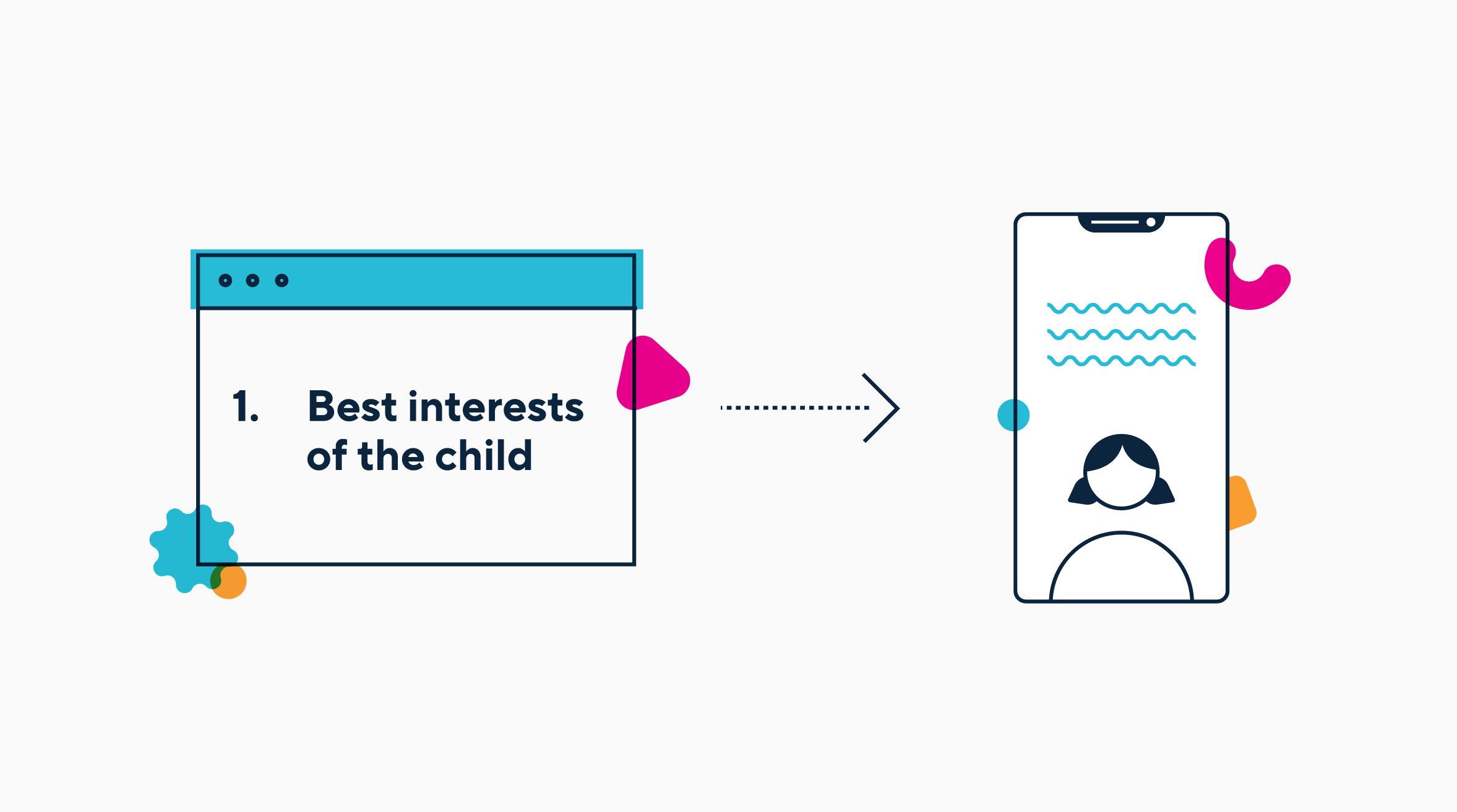Best interests of the child overview
-
Due to the Data (Use and Access) Act coming into law on 19 June 2025, this guidance is under review and may be subject to change. The Plans for new and updated guidance page will tell you about which guidance will be updated and when this will happen.

The Children’s code, also formally known as the Age-appropriate design code, supports organisations to design digital services that meet children’s needs, respect their rights, and helps them to explore, play and grow online.
The best interests of the child is a foundational principle within the code. It is drawn from Article 3 of the UN Convention on the Rights of the Child (UNCRC) within which the code is grounded. It states that:
“In all actions concerning children, whether undertaken by public or private social welfare institutions, courts of law, administrative authorities or legislative bodies, the best interests of the child shall be a primary consideration.”
The code’s best interests of the child standard states that you should:
- Ensure that the best interests of the child are a primary consideration when you process their data. Your commercial interests may not be incompatible with the interests of children, but you need to consider the best interests of the child as a priority where conflicts arise.
- Use the UNCRC as the basis for your assessment of the best interests of the child. This should also help you understand the capacities and needs of children when designing digital services. The UNCRC’s articles outline a range of rights held by children. You must balance considerations of how your processing of children’s data both positively supports, and pose risks to these rights. This will ultimately ensure you are acting in their best.
- Another foundational aspect of the code, and UK data protection law, is the data protection impact assessment (DPIA). The DPIA is an important process in which you can consider and document how you use data, what risks that might pose, and solution for addressing them. Assessing children’s best interests is an important part of the DPIA process. This is obligatory for all organisations in-scope of the code.